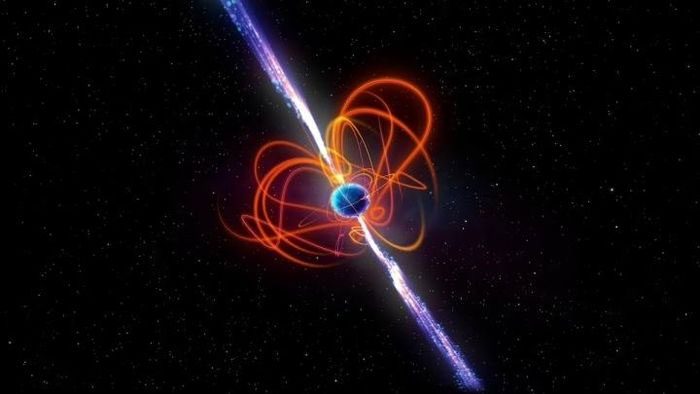The Daily Mail reports on a study from the Curtin University research team in Australia, indicating that the mysterious star is located in the constellation Scutum and emits radio wave pulses lasting five minutes every 22 minutes.
This has led scientists to question the existence of an extraterrestrial civilization attempting to communicate with Earth. Previously, many astronomers have pondered how aliens might communicate with humans if they exist. However, there has yet to be evidence of an extraterrestrial civilization.
According to the Curtin University research team, the star emitting radio pulses is a magnetar, which possesses the strongest magnetic field ever detected, designated as GPM J1839−10.

Magnetars can produce extremely powerful energy bursts lasting from several seconds to minutes. (Photo: ICRAR)
This allows them to generate extremely powerful energy bursts over periods ranging from seconds to minutes. What is unusual is that this cycle repeats precisely every 22 minutes.
The phenomenon of emitting radio waves from this star has persisted for at least 30 years, leading to speculation that it may have some connection to extraterrestrial life.
Dr. Natasha Hurley-Walker, the lead author of the study, stated: “Whatever mechanism is behind this is extraordinary.”
A magnetar is a type of neutron star with an extremely strong magnetic field and often erupts violently without warning.
Neutron stars are formed from the remnants of large stars that collapse after supernova explosions—also known as supernovae. The supernova explosion occurs in the final stages of a star’s evolutionary process.
According to Dr. Hurley-Walker, the mentioned magnetar, GPM J1839−10, is located 15,000 light-years from Earth in the constellation Scutum.
“This remarkable object challenges our understanding of neutron stars and magnetars, which are some of the strangest objects in the universe,” Dr. Hurley-Walker added.

Many observatories worldwide have recorded radio waves from GPM J1839−10, and this process has lasted over 30 years. (Photo: ICRAR).
In 2022, the Curtin University research team discovered GPM J1839−10 using the Murchison Widefield Array (MWA) radio telescope in Western Australia. Subsequently, many other telescopes also detected this magnetar.
However, upon reviewing the data archive from other radio telescopes worldwide, Dr. Hurley-Walker’s team discovered that GPM J1839−10 had been detected as far back as 1988.
The Curtin University researchers believe that their discovery of GPM J1839−10 raises new questions about the formation of magnetars and could even shed light on the origins of mysterious phenomena such as the appearance of enigmatic radio wave pulses.
This helps them determine whether the mysterious radio pulses are from an extremely long-period magnetic field or something more extraordinary, like a connection to extraterrestrials.



















































